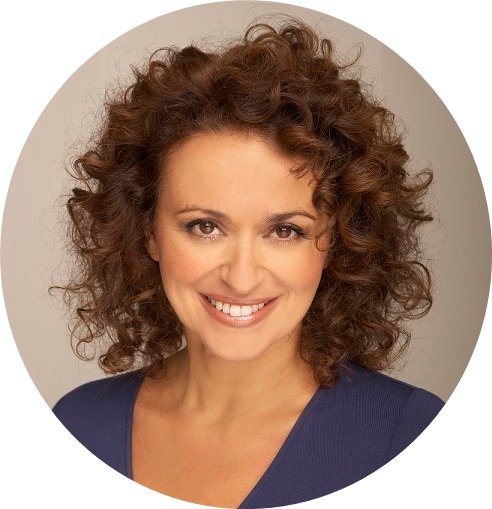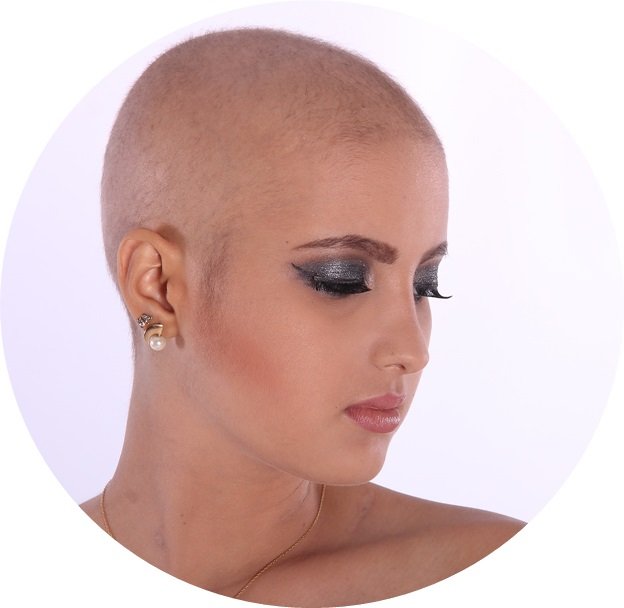Dyed Hair – Keep It Looking Fabulous
Each dyeing is a major intervention on the hair structure. Colour treated hair tends to dry, becomes fragile, breaking quickly, falling and having split ends. Each hair dyeing process penetrates into the layers of the hair and the level of hair damage depends heavily on the dyeing technique. Too much and the hair gets dehydrated, losing its brilliance and elasticity. So dyed hair needs special care.
Tips and tricks for healthy hair
- Do not use dye on clean hair
As is supposed to be, after each wash the scalp remains clean, but the removal of sebum has the following disadvantage: the scalp is no longer protected by natural oils and chemicals, and the dye can cause irritation of the skin.
Unlike the common belief that any shampoo goes, not all shampoos are good for dyed hair. Ideally, a woman who has dyed her hair will use a special hair shampoo and conditioner, from a professional range, avoiding any regular products found in supermarkets. Even if they are more expensive, the shampoos and conditioners designed for dyed hair do not dry and do not remove your colour as the classic products do.
- Water helps but also damages
Washing your hair with hot water repeatedly leads to the colour fading rapidly. For this reason, dyed hair should be washed with warm water, not hot. Women going to the pool should also take good care of their hair, protecting it from the chlorine in the water. Chlorine contributes to hair discoloration and, moreover, it dries it very hard. That’s why, if you’re going to the pool, you’d better put on a special swimming cap. Even if the idea sounds unappealing, it’s better to protect your hair than having it dehydrated.
- Holy conditioner
 Women with dyed hair should not think twice about applying conditioner. Beyond the fact that the use of the conditioner is more than mandatory, it should be applied to almost the entire length of the hair (avoiding the roots if possible) to hydrate the hair. Dyeing dries and weakens hair, so using a special color-treated hair conditioner will keep your strands healthy and moisturised properly. Moreover, a hair mask can also be applied at home. All you need is an avocado, a few drops of almond oil and oily vitamin E. Mix well and apply the mixture on slightly moist hair and let sit for at least 10 minutes. If you want to spoil yourself, once a week apply a professional hair treatment.
Women with dyed hair should not think twice about applying conditioner. Beyond the fact that the use of the conditioner is more than mandatory, it should be applied to almost the entire length of the hair (avoiding the roots if possible) to hydrate the hair. Dyeing dries and weakens hair, so using a special color-treated hair conditioner will keep your strands healthy and moisturised properly. Moreover, a hair mask can also be applied at home. All you need is an avocado, a few drops of almond oil and oily vitamin E. Mix well and apply the mixture on slightly moist hair and let sit for at least 10 minutes. If you want to spoil yourself, once a week apply a professional hair treatment.
- Avoid the sun as it is damaging to the colour
It’s great to sit out on a sunny day, but the hair is not as excited about the time spent under the sun because the heat and the sun rays make it loose its shine. For this reason, wearing a hat is a must if you want to keep your colour and have a healthy hair.
- Shine comes with special care
Using conditioner is not enough if you’re used to dyeing your hair monthly. Ask your hair stylist to recommend a special serum or spray that will give you the nourishment your hair needs. Use the serum to protect the colour after each wash when you pat dry your hair with a towel. If your hair is freshly dyed you might want to give it two days before the first wash, just to stabilise the dye and have your hair shine. It is recommended to also use nourishing masks to provide vitamins needed for hair health.
- Apply a moisturising hair mask
After a week since you have dyed your hair, it is advisable to apply a moisturising hair mask for a more beautiful look. Hydration offered by a mask is especially important for the ladies choosing reddish colours because the reddish dye loses its shine quicker.
Natural home remedies for dyed hair
The natural care of the coloured treated hair is made according to two principles: one is represented by the colour of the hair and the other by its tendency to dry, get oily or break. More specifically, each colour has a natural treatment type so that the pigment lasts longer.
Coloured hair care mask – Normal or Dry Hair
For normal or dry hair, an intensely moisturising and regenerating mask is recommended that rebuilds the hair’s protective structure. This mask is prepared as follows: take a bowl and mix two tablespoons of castor oil, two tablespoons of olive oil, half a lemon juice, 10 drops of oily vitamin A (bought from the pharmacy), liquid vitamin E and A (all from the pharmacy), an egg yolk and two tablespoons of honey. The mask lasts for half an hour, then the hair is washed with shampoo. This mask is used two or three times a week.
Coloured hair care mask – Greasy Hair
For oily hair that has been dyed, a mask made from two lemon juice, one tablespoon of castor oil, 10 drops of oily vitamin A, one capsule of vitamin E, and 3 crushed cucumbers made into a paste will do the trick. This mask is applied on the hair and at the roots massaging the scalp for 5 minutes, then let it work for half an hour. Later wash the hair with water and shampoo. The mask is done twice a week.
Finally, no matter what colour your hair is, the following natural products will be used to preserve the paint pigment:
For blond-gold hair: Prepare a decoction of 100g of chamomile flowers or marigolds in a litre of water that boils until the water drops to half. It is then squeezed and used in water to rinse hair. The hair will not be wiped off or rinsed with water.
For brown hair: prepare a decoction of a bunch of green nut shells and a litre of water. Boil until the water drops to half. The decoction is used in rinsing water. It has the role of enhancing the effects of brown hair.

For red-brown hair, the decoction is made of 3 punches of onion leaves and one litter of water. Boil, then let it cool and rinse your hair. After several showers, blonde hair gets copper shades, and if you use red onion sheets, the shades will be a rusty brown.
For black hair, you can use black tea. To one litre of water, put 10 sachets of black tea, boil water and, after cooling, apply it to the hair. Leave it to act for half an hour after which you only rinse your hair again with water.
What hair colours do you wear in 2017?
The colours of hair dyeing have become as fashionable as clothes. Each season VIPs and Hollywood stars have set the trend with bold, new shades of green, blue and pink. 2017 will be the year of bold and nonconformist nuances, but also of romantic and natural shades (light blond, dark or dark brown).
Bold shades are pink, blue, green or turquoise. Whether you dye your entire hair, just a few strands or the ends, these hair dye colours quickly charmed the public.






 who said to me that I have the balding gene.
who said to me that I have the balding gene.
 confessed to frequently wearing wigs on the red carpet to hide her patchy hair loss caused by alopecia areata.
confessed to frequently wearing wigs on the red carpet to hide her patchy hair loss caused by alopecia areata.